Gracilis muscle
What is the Gracilis muscle?
The Gracilis muscle is a long and thin muscle situated in the medial (adductor) compartment of the thigh. It shapes a piece of the adductor muscle gathered with the adductor longus, adductor brevis, adductor magnus, and pectineus muscles. Gracilis is the most shallow hip adductor, overlying the excess four. It is additionally the most fragile part yet the main hip adductor that crosses and follows up on two joints; the knee and hip
The gracilis muscle connects the coxal bone to the tibia, enabling thigh adduction and flexion, leg flexion, and medial (internal) rotation. These actions play several important roles, such as helping to maintain trunk balance while walking.
Origin of Gracilis muscle
The body of the pubis and the inferior ischiopubic ramus are the sources of the gracilis muscle.
Insertion
The gracilis muscle inserts on the medial tibia at the Pes anserinus and descends almost vertically down the leg. The Sartorius and Semitendinosus also attach at the pes anserinus.
Relations
Within the medial (adductor) compartment of the thigh, the gracilis muscle is the most superficial. The skin and subcutaneous tissue cover it on the surface, and the deep fascia lata layer covers its medial portion as well. The part of the fascia lata between the sartorius and gracilis ligaments is pierced by the saphenous nerve, which leaves the adductor canal to become subcutaneous. The descending genicular artery’s saphenous branch also runs between the sartorius and gracilis.
Deep within the gracilis are the adductor brevis and adductor magnus muscles. However, the complex and shifting relationships that can emerge from this muscle’s spiral trajectory are possible. As a result, the gracilis is also located medially to the adductor longus, adjacent to the medial border of the adductor magnus, and the lower border of the adductor brevis. The tibial collateral tendon is found somewhere down in the gracilis ligament, isolated from it by the anserine bursa.
Innervation
The obturator nerve, which is a branch of the lumbar plexus, innervates the Gracilis muscle. It comes from the spinal nerves L2-L3.
Blood supply
The artery to the adductors, which is a branch of the deep femoral artery, provides Gracilis with the majority of its vascular supply. The gracilis’s lateral surface is where the artery to the adductors enters, approximately 33% away from where it began.
The medial circumflex femoral artery also supplies a small amount of blood to the muscle’s proximal portion. The distal third of the gracilis is likewise provided by a minor part of the femoral artery.
Functions of Gracilis muscle
Gracilis moves the hip and knee joints in several different ways:
When the knee is in a semi-flexed position, strong leg flexion and medial (internal) rotation around the knee joint are required.
Around the hip joint, weak thigh flexion and adduction just help the other, stronger thigh adductors.
The gracilis’s primary function is to assist the hamstring muscles in flexing the knee, such as during the first swing phase of walking or boat rowing. The medial revolution of the leg additionally becomes apparent during strolling, when the foot is emphatically established on the ground.
The gracilis muscle laterally rotates the femur and pelvis around the tibia, which serves as a fulcrum when the lower extremity is fixed. The trunk’s balance depends on this action. However, when the rider uses the gracilis muscle to grip the horse (thigh adduction) and control the flexed knee, all gracilis movements become apparent.
Clinical significance
To test the life structures and scope of developments of the gracilis, the patient requirements to flex the leg against obstruction and turn it medially. This mixture shows where the gracilis ligament meets the popliteal fossa of the knee superomedially. This region’s upper tendon is the most medial and anterior. If the tendon is traced proximally, the origin of the gracilis can be palpated. Testing the developments of the gracilis is done by flexing the patient’s knee to roughly ninety degrees, internally rotating the leg, and keeping up with these situations while adducting the thigh.
When reconstructing torn tendons and ligaments throughout the body, particularly in the knee (anterior cruciate ligament), the gracilis tendon is frequently harvested and used as a ligament. Removal of the gracilis tendon has been shown to weaken the knee’s isometric contraction and flexion without affecting the patient’s quality of life or perception of leg movement, according to studies.
A number of things, such as overuse, strain, or injury, can result in pain in the gracilis muscle.
Common symptoms of gracilis muscle pain may include:
- Pain in the inner thigh that may be sharp, dull, or achy
- Swelling or tenderness in the inner thigh
- Difficulty walking or standing
- Stiffness in the hip joint
- Pain that worsens with activity or exercise
Gracilis muscle pain is often treated with the RICE method(rest, ice, compression, and elevation). Physical therapy or gentle stretching exercises may also be helpful for easing discomfort and enhancing range of motion. Sometimes it may be advised to take over-the-counter painkillers or prescription muscle relaxants to help manage discomfort. You should speak with a Doctor for a more thorough evaluation and treatment choices if your pain is severe or does not get better with conservative measures.
Gracilis muscle stretching
Butterfly stretch
The goal of this stretch is to make your inner thigh and groin more flexible. Sit on the floor and spread your thighs as far as you can while keeping your knees bent and your feet together as you begin. Start to incline your torso ahead while supporting your chest area with your lower arms on your thighs. Stretch lightly for 20-30 seconds.

Pancake stretch
The goal of this stretch is to make your inner thigh and groin more flexible. Begin by sitting on the floor and spreading your legs to the extent while keeping your knees straight. As you begin to lean forward, use your hands to support your upper body. Stretch lightly for 20-30 seconds.
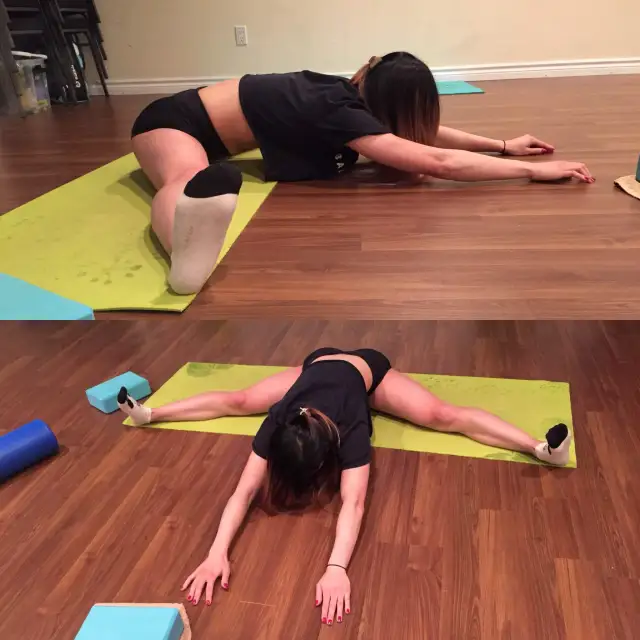
Gracilis muscle strengthening
Groin slider
An eccentric control hip adductor exercise is the focus of this exercise. To do this exercise accurately it is essential to keep a sluggish beat as you slide your leg out. Slide your foot out onto a slider or hand towel if you’re on hard flooring. Reduce the amount of weight placed on your non-slider leg and ensure that your foot maintains downward pressure on the disc. To work your inner thigh muscles, drive your foot into the floor and pull it into your midline.
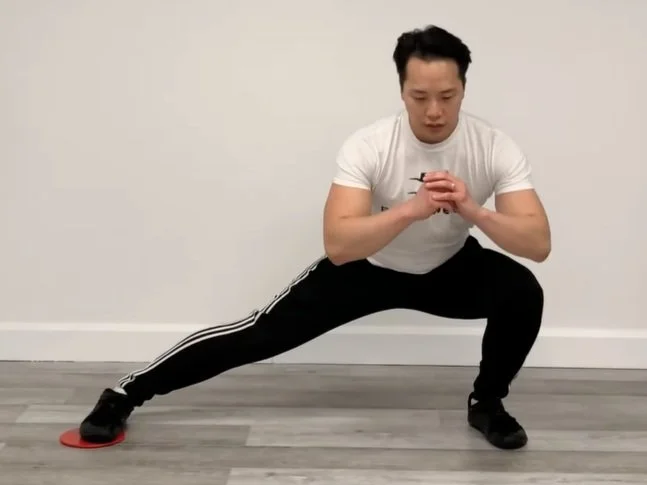
Hip adductor squeeze
This activity is an isometric hip adduction practice that utilizes a foam roller while in a supine position. Lay on your back with your feet flat on the ground and your knees bent to 90 degrees. Squeeze a yoga block or foam roller between your knees for up to seven seconds at maximum effort. Gradually discharge the contraction and rest for 5 seconds before recounting as required.
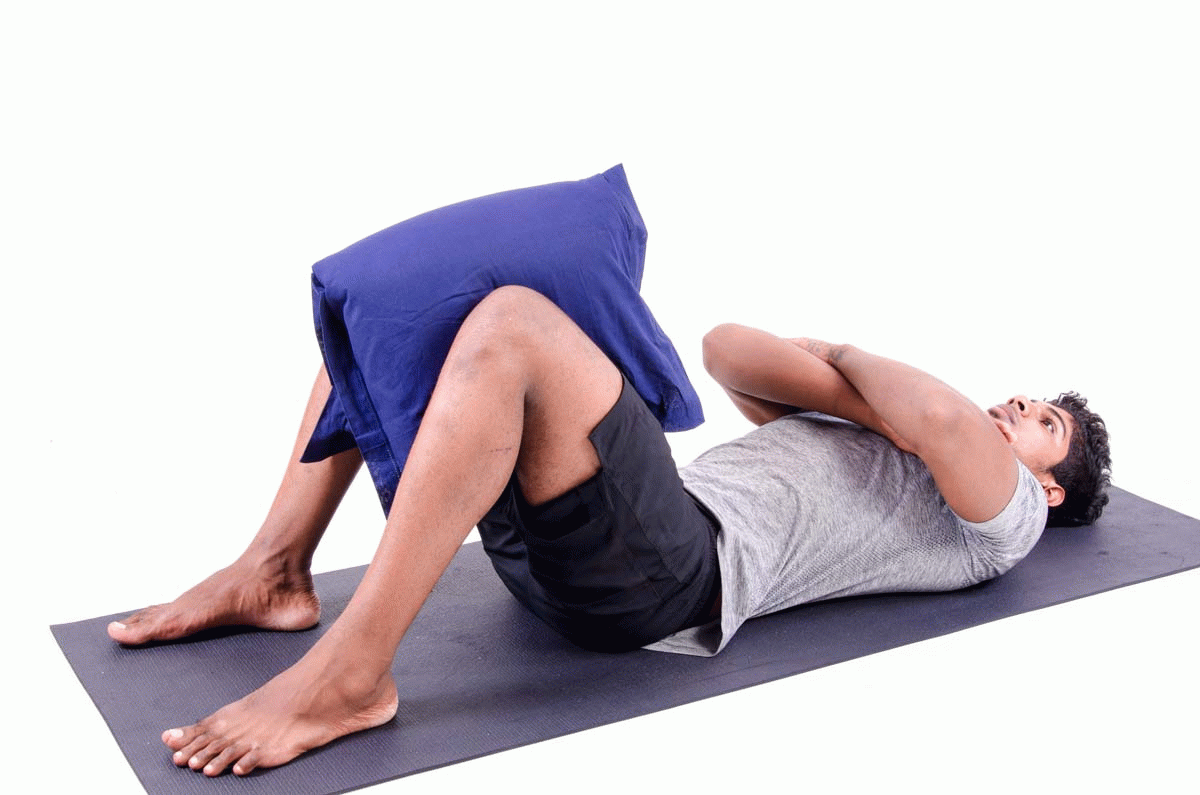
Swiss ball adductor curl
This is a hip adductor stability and eccentric boosting activity. Start by using a Swiss Ball or Stability Ball to support one knee. Brace the core to keep a neutral spine. Open your hips as you slowly roll the ball to the side. Pull the knee back in as far as is comfortable to engage the inner thigh in a concentric contraction.
Kneeling groin slider
An eccentric control hip adductor exercise is the focus of this exercise. To do this exercise accurately it is essential to keep a sluggish beat as you slide your leg out. Slide your foot out onto a slider or hand towel if you’re on hard flooring. Reduce the amount of weight placed on your non-slider leg and ensure that your foot maintains downward pressure on the disc. To work your inner thigh muscles, drive your foot into the floor and pull it into your midline.
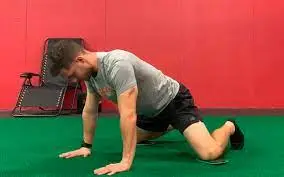
Swiss ball adductor press
This is a stability and strengthening isometric exercise for the inner thigh and groin muscles. Lay on your side and place your top foot on a Swiss Ball or Stability Ball to get started. By pressing the foot into the ball to press it against the floor, you’ll work the muscles in your inner thigh. Hold a maximal okay constriction for 5-7 seconds and steadily loosen up before finishing your next count.
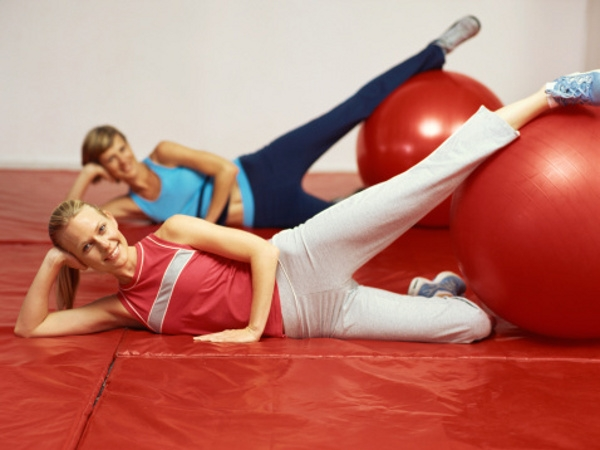
Adductor squeeze bridge kick
The goal of this hip adductor strengthening exercise is to improve stability in the knee and hip. Place a yoga block or foam roller between the knees and contract it with a high measure of exertion while laying in a crook position (on your back with knees twisted). Place your feet about halfway apart at your hips. Lift the pelvis off the floor with a firm squeeze while maintaining a neutral spine. By extending the knee, lift one leg off the ground, hold it there for two seconds, and then lower the pelvis back to the ground.
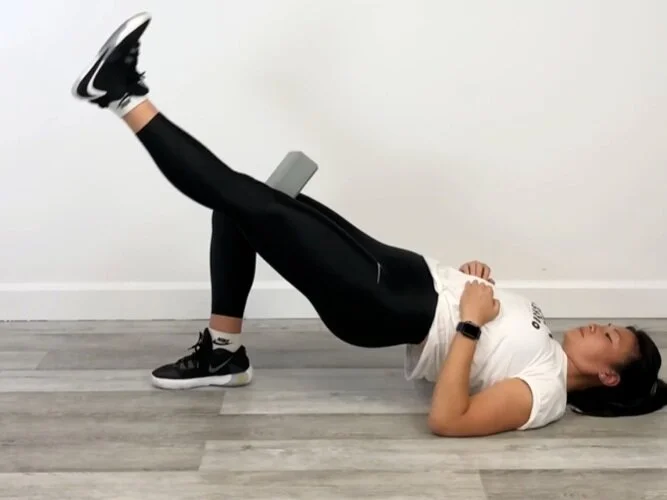
Groin rock back / Adductor rock back
This is a hip mobility practice that objectives the muscles of the inward thigh. With the target leg being the outstretched leg, begin in a modified quadrupedal position. You can use your elbows or hands to help support your upper body. Set the straight leg in a position where a light stretch can be felt at the beginning position. Increase the amount of stretch felt in the inner thigh and groin muscles by slowly rocking the hips back. After five to ten seconds in this position, you can slowly return to the starting position.
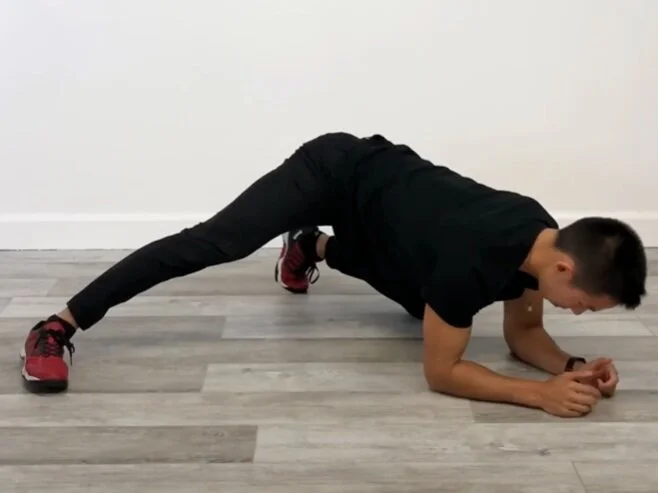
Counter rotation hip hinge
This is a tibial internal rotation exercise performed with a band. Place one band just below the ball of your big toe to get started. Circle one more band around a similar leg’s knee and anchor it close to you. Maintain a neutral spine and hinge forward at the hip with a straight knee.
Counter rotation split squat
This is a tibial internal rotation exercise performed with a band. Place one band just below the ball of your big toe to get started. Circle one more band around a similar leg’s knee and anchor it close to you. Begin in a split position and gradually bring down your body by twisting the two knees. You should let the band behind you pull your knee out.
Quadruped rock back
This is a groin and inward thigh mobility practice used to focus on the hip adductors. With your knees spread more than shoulder-width apart, get into a quadrupedal position at the outset. To sit on your heels, rock your pelvis back while supporting your upper body with your hands. Make certain to be on a cushioned surface to safeguard your knees.
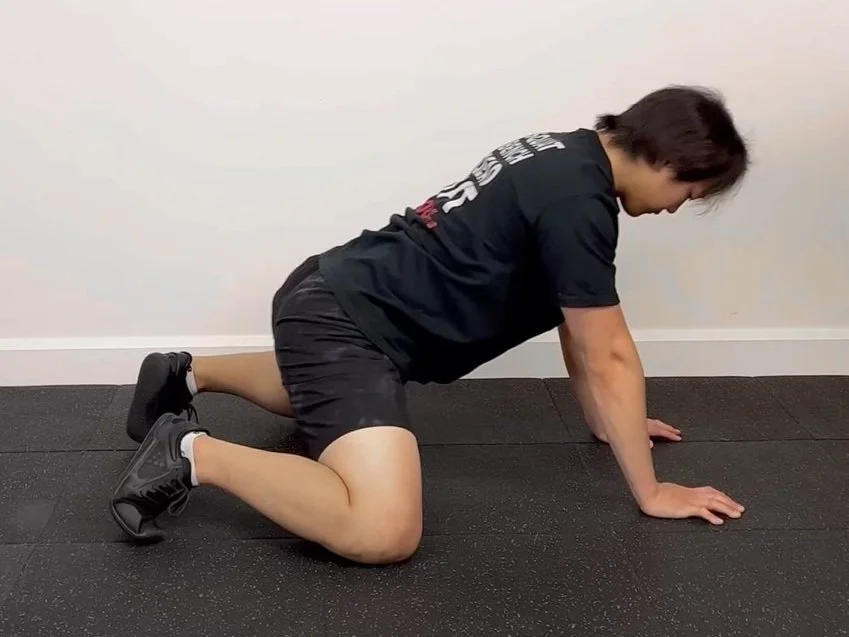
Anterior hip capsular glide
The anterior capsule is the focus of this band-assisted hip capsule mobilization technique. Beginning in a tall kneeling position, anchor a heavy strength or pullup assist band at hip height. Circle the opposite end around your objective hip then, at that point, turn your hip externally. Permit the band to pull your femoral head ahead (don’t avoid the band’s drag) to feel a capsular stretch at the front of your hip. This can be held for anywhere from 30 to 60 seconds.
Adductor squeeze bridge
The goal of this hip adductor strengthening exercise is to improve stability in the knee and hip. Place a yoga block or foam roller between the knees and contract it with a high measure of exertion while laying in a crook position (on your back with knees twisted). Place your feet about halfway apart at your hips. Lift the pelvis off the floor with a firm squeeze while maintaining a neutral spine. Hold for 2 seconds then, at that point, lower the pelvis back to the bottom.
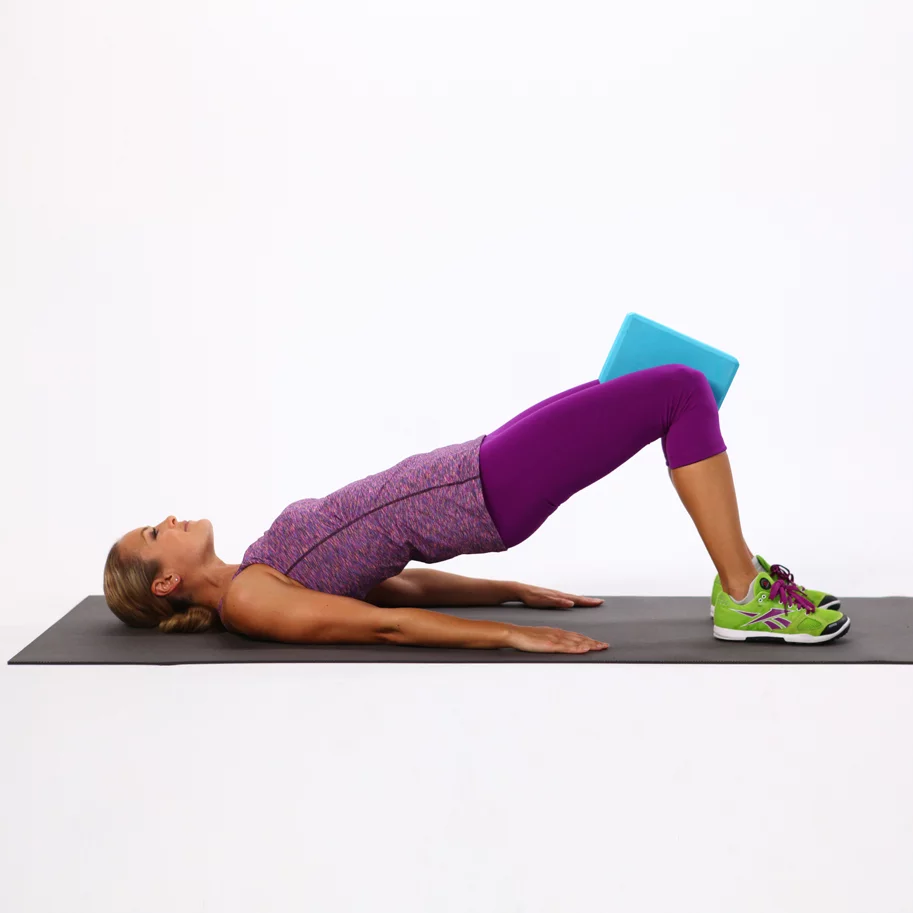
Assisted banded hip adduction
This is a strengthening exercise for the hip abductor that can also be used to separate hip motion from spine motion. Begin by remaining with a band circled on the lower leg of the objective hip with the opposite finish of the band secured to a steady item on a similar side of your body. To improve your balance, hold onto a stable object. While aiming for maximum muscle range and contraction, pull your leg straight to the opposite side. To maintain a level pelvis, make sure your torso does not do a side crunch during the exercise.
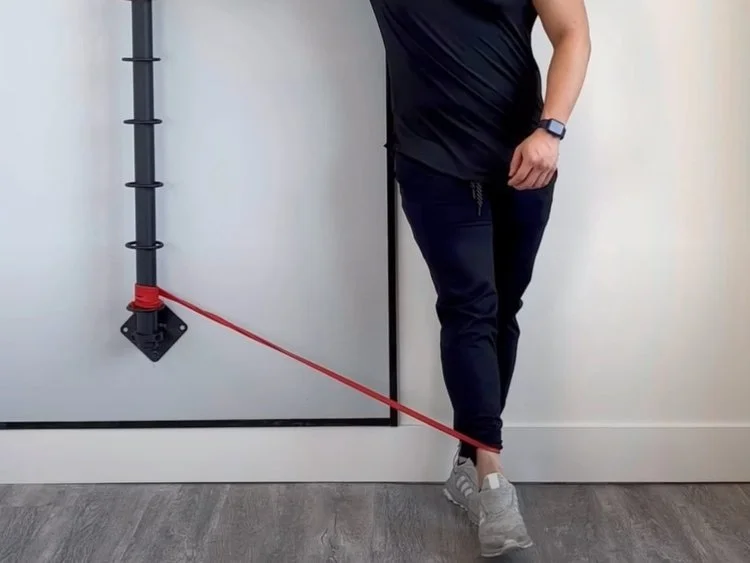
Pendulum leg swing
The hip and thigh muscles can benefit from this dynamic warm-up exercise. You might clutch a steady item with your hands for added balance. Swing one leg side to side and raise it off the ground in front of you. As the muscles adjust to the change in length, gradually increase the range of motion.
Hip adductor rock back
The hip adductor rock back practice is utilized to extend the muscles of the inward thigh. With the target leg being the outstretched leg, begin in a modified quadrupedal position. You can use your elbows or hands to help support your upper body. Set the straight leg in a position where a light stretch can be felt at the beginning position. Increase the amount of stretch felt in the inner thigh and groin muscles by slowly rocking the hips back. After five to ten seconds in this position, you can slowly return to the starting position.
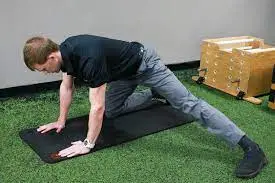
Frog leg belly breathing
Engaging the transverse abdominis and pelvic floor muscles through this breathing technique is beneficial. Additionally, this helps to alleviate tension in the inner thigh and groin. Rests on your back with your hips and knees flexed. With the knees spread apart, keep the feet together. Put two hands on your tummy. Breathe in deeply through your belly with ease. While engaging the TVA, exhale. To draw in the TVA during the breath out, visualize dragging the sides of your belly inwards.
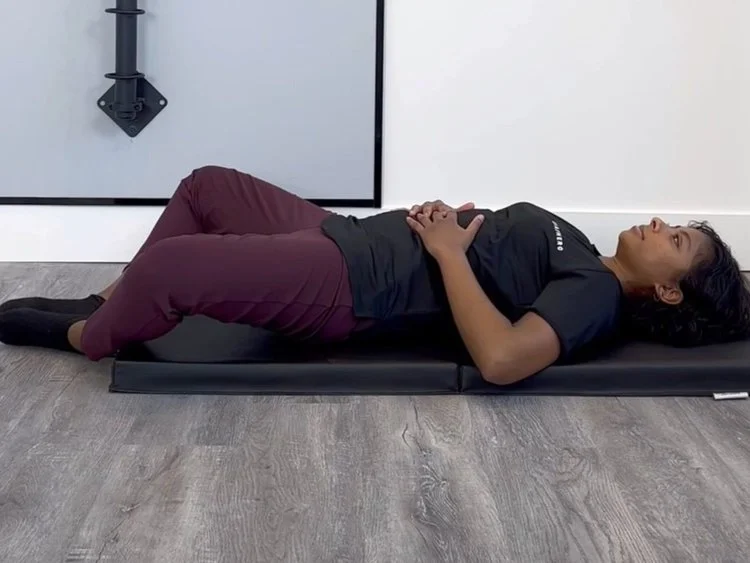
Adductor squeeze wall sit
An isometric stability exercise for the hip adductors and knee extensors is this one. Begin by sitting up straight and leaning against the wall. Sit with your knees bent 90 degrees. Engage the inner thigh muscles by squeezing a foam roller or yoga block between the knees. Maintain this position for 10 to 15 seconds before switching feet if necessary.
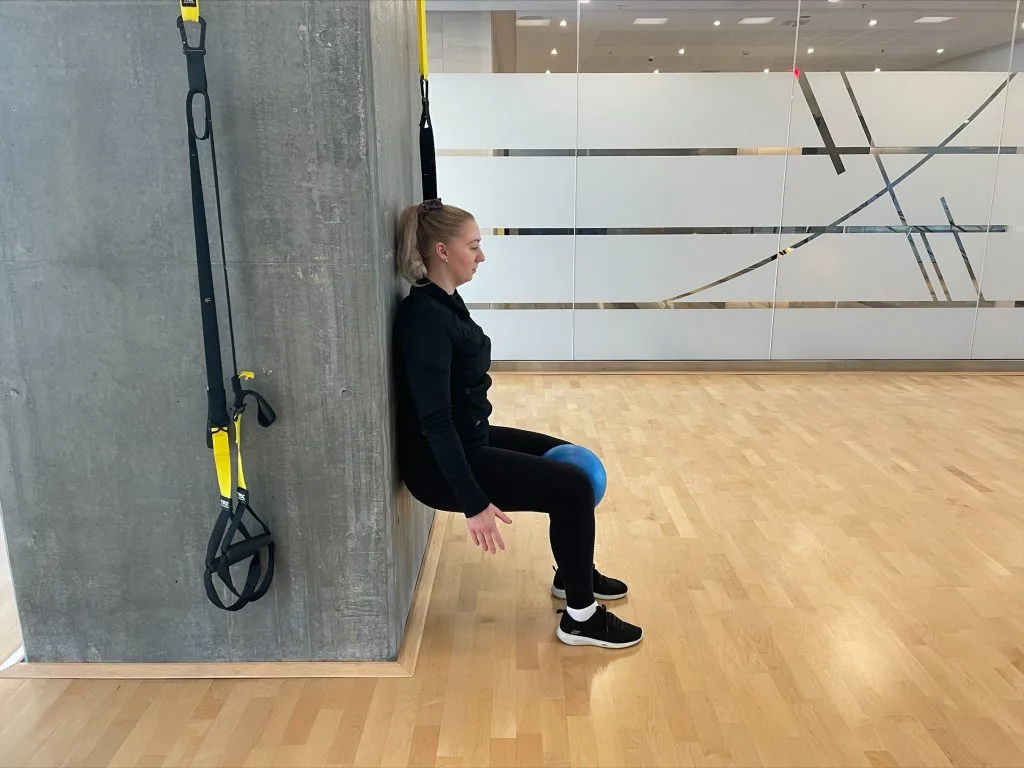
FAQ
What causes pain in the gracilis muscle?
Overuse of the gracilis muscle may be the cause of these spasms. They can also be caused by muscle fatigue and dehydration. Problems with the brain. The gracilis muscle can spasm in response to certain neurological conditions, potentially causing pain.
Is the gracilis a muscle in the hamstrings?
The gracilis muscle is the smallest of the four hamstring muscles. It may be protected in the majority of people because it is sandwiched between two other muscles. It is defined as a striplike muscle. Because it crosses two joints—the hip and the knee—it is a long muscle that can be mechanically disadvantageous.
How long does the gracilis muscle take to recover?
the transfer of the gracilis muscle at an outpatient surgery center, and the patient can return home the same day as surgery. The initial healing time ranges from five to twelve days, depending on the amount of swelling and bruising.
What is a great reality about the gracilis?
The medial thigh’s Gracilis muscle is a thin, long muscle. The Gracilis muscle’s tendon can be used to repair torn ligaments and tendons without affecting a person’s quality of life, which is a fun fact about the muscle.
What are normal gracilis wounds?
The gracilis muscle is susceptible to injuries like strains in the groin, muscle spasms, and pinched nerves that can lead to muscle weakness and pain. These wounds might be treated with ache prescriptions, active exercise, and delicate activities and stretches.

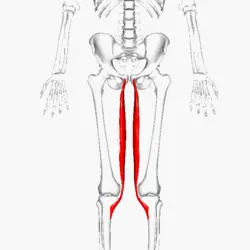
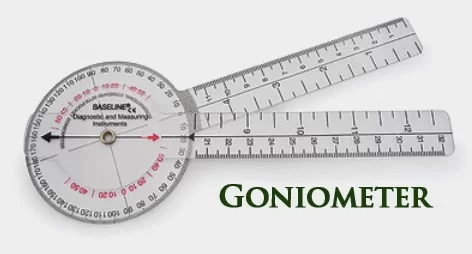
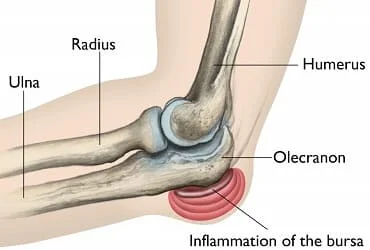
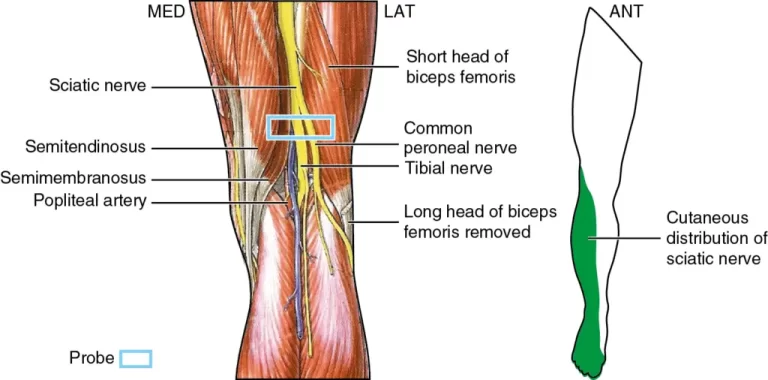
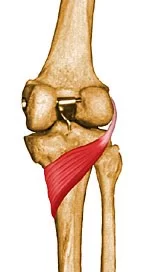
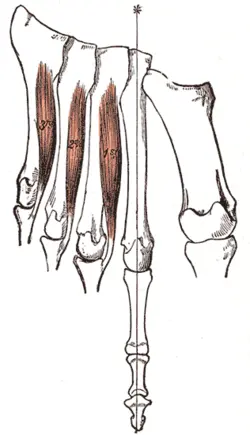
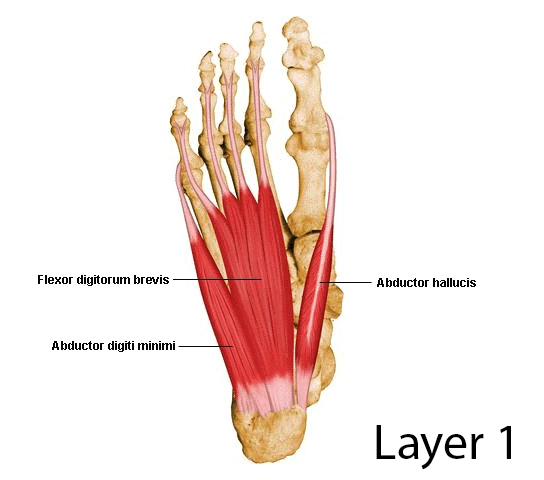
2 Comments